What does 25,000 new koala trees mean?
From June to mid September 2021, Koala Clancy Foundation planted 25,000+ koala trees, and then from June to September 2022 we planted another 27,600+ trees for koalas. That sounds like a lot, but precisely what does it mean for koalas? What are the facts and critical numbers?
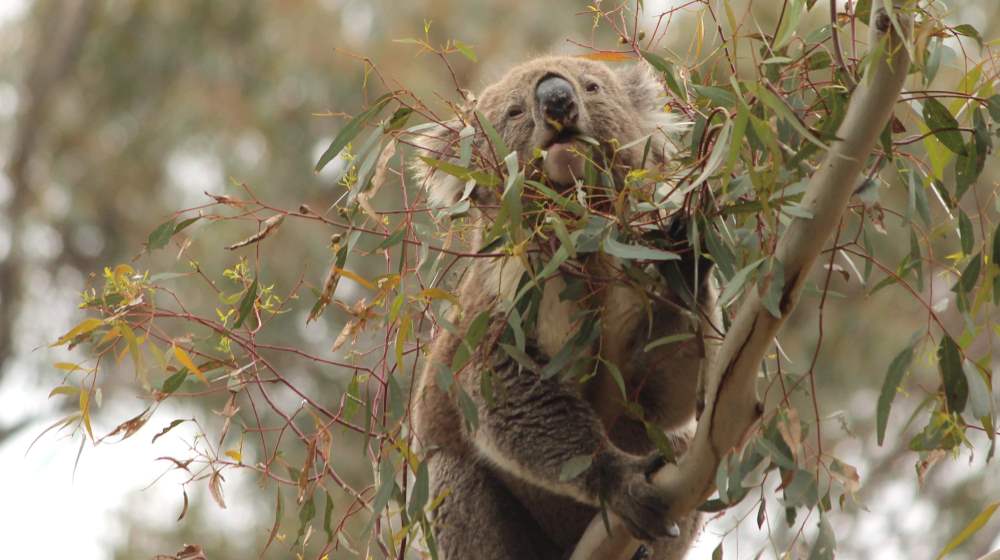
Fact 1: 25,000 koala trees planted means life for 8 koalas.
Every koala in our area requires 3000 trees to live. So 8 koalas will have a home as a result of our tree planting in 2021, and 9 koalas will live because of our tree planting in 2022. They join 3 in 2020, 1 each in 2019, 2018 & 2017 – in total Koala Clancy Foundation’s efforts are saving 23 koalas.
Were you wishing we would say 100 or more? We wish that too. But creating a long-term future for large wild animals is never a quick fix. It’s a lot of hard work.
We know it’s worth it every time we see a tiny koala joey peek out from her mum’s arms. We estimate there are only 100 koalas in the whole of the You Yangs. In 6 years we’ve saved 23 of them. Next year we will save another 8 to 10, and by 2025 we will have saved the lives of over 50 koalas. That’s real progress.
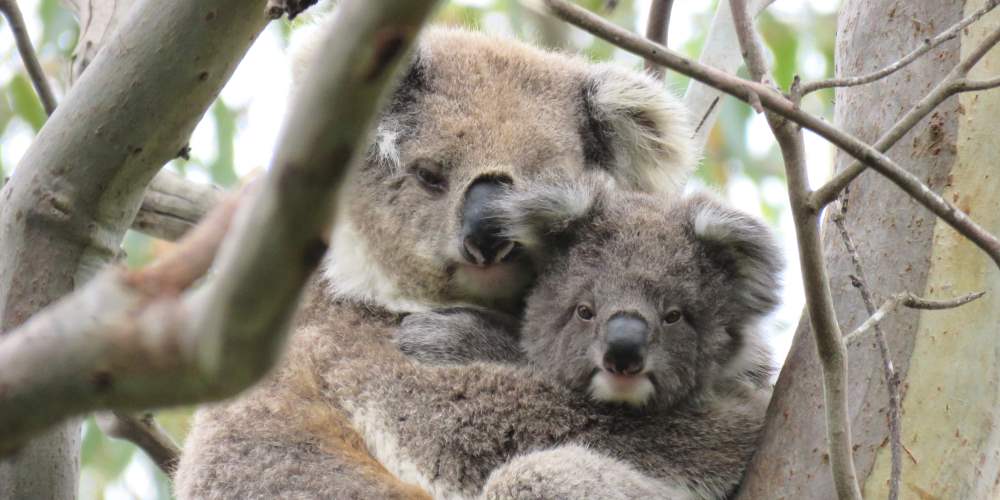
..
Fact 2: 25,000 new koala trees means 3000+ tonnes of carbon stored.
We have recently had one of our koala tree planting projects professionally assessed for its carbon storage potential. FLINTpro found that our Wurdi 2021 planting: 5900 trees would store 710 tonnes of carbon in 2030, 1530 in 2050 and 1920 tonnes in 2100. Read the full report here.
By extrapolation*(1), our entire 2021 tree planting season will store 3020 tonnes in 2030, 6500 in 2050 and 8,100 tonnes in 2100.
It is estimated that every Australian emits 21 tonnes of carbon every year. So by planting 25,000 trees, we have offset the emissions of 143 people*(2). That’s the equivalent of all our Koala Clancy Foundation staff, all our landowners, and all our members. By 2100 our trees will be offsetting the emissions of 385 people.
However, offsetting is not good enough. It’s like a bandage over a wound – important for healing, but only if the cause of the damage has ceased. For koalas, the damage is continuing. The wound is fossil fuel emissions, and if we don’t stop those, the bandage will be useless.
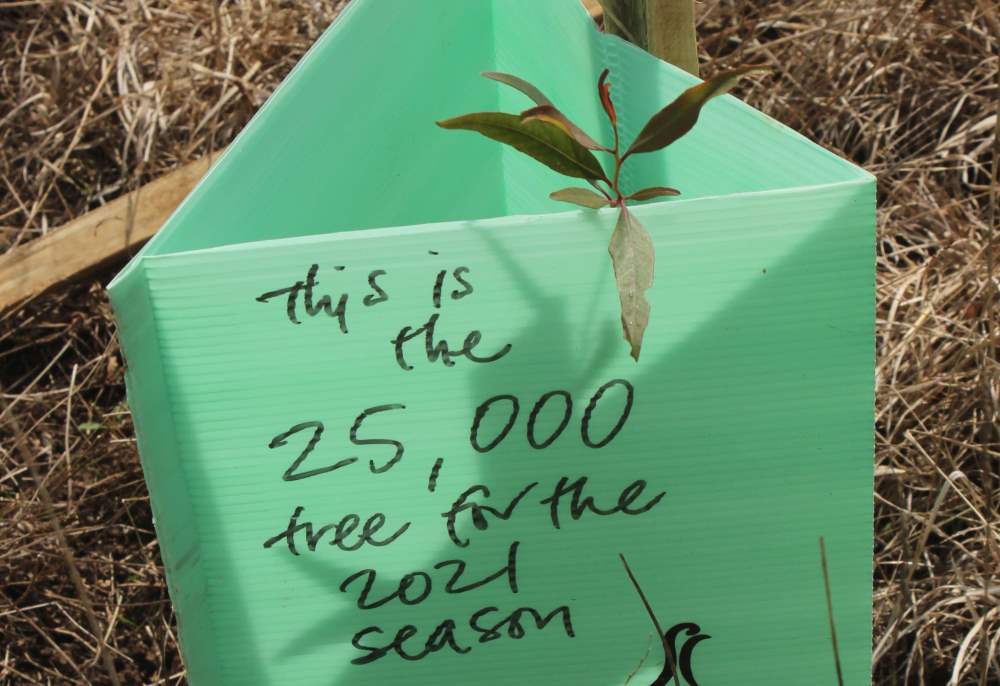
..
Fact 3: 25,000 new koala trees means erosion mitigation and weed control along 8.6 km of river, and over 45 hectares of land.
Many watercourses in our region are bare of trees, or tree cover is vastly reduced, which leads to erosion. When it rains topsoil gushes off the land and into the river, where it clouds the water making it hard for Platypus and fish to feed, and for plants to grow. By planting these trees along waterways, we are putting barriers (trees) in the way of erosion, keeping the topsoil where it belongs – on the land.
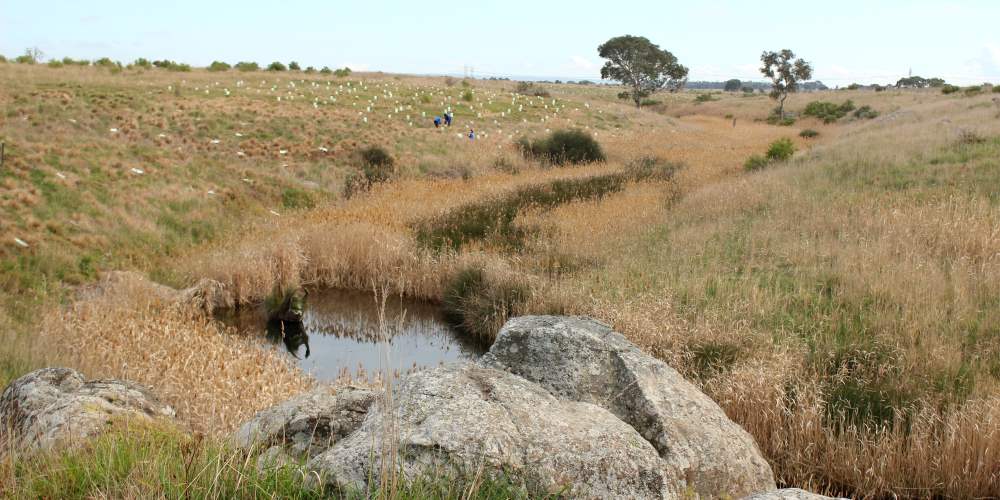
In addition, it has been found that trees create rain. Shade and transpiration from trees also cools the land, and reduces evaporation in river pools. So by planting trees we are keeping the water where it belongs – in the river.
Native vegetation also suppresses weeds. It takes a few years, but invasive weeds like Serrated Tussock are effectively controlled by native forest revegetation.
To see our plantings, go to the new international platform for revegetation across the globe: Restor.
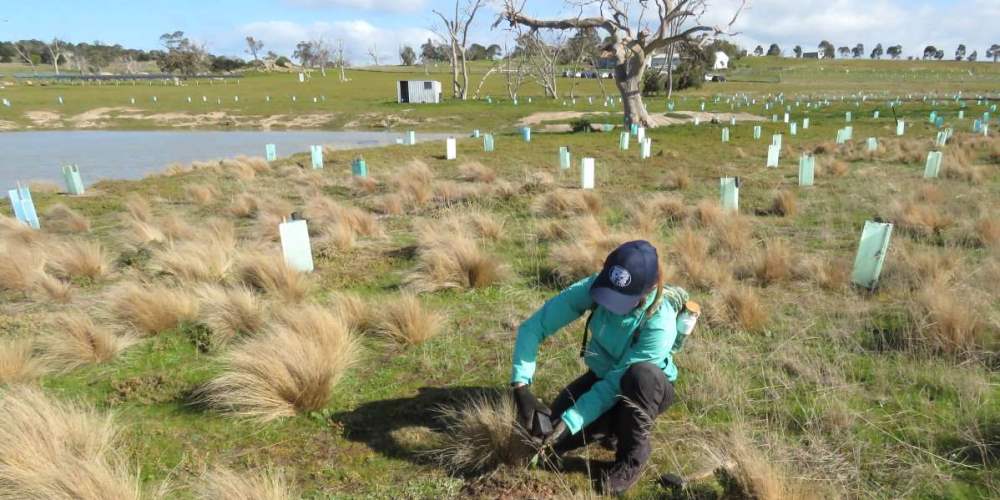
..
Fact 4: 25,000 new koala trees means habitat for other species, including some that are endangered or threatened.
We mostly plant grassy woodlands, which are one of Australia’s most threatened ecosystems. Woodlands are very open forests, which used to cover a vast area of Australia, and were home to one-third of Australia’s birds. Sadly, 80% of woodlands in temperate Australia have been cleared, leading to massive declines in the animals that lived there.
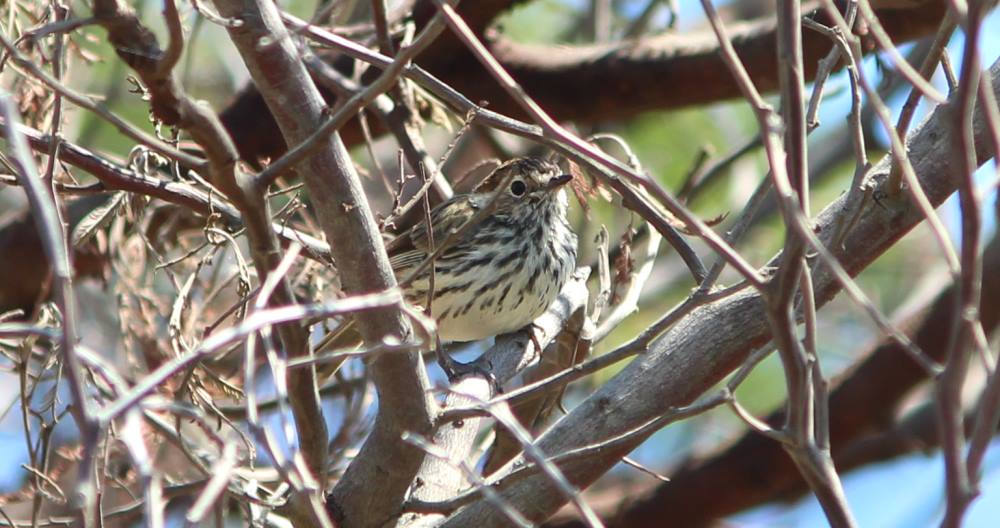
Four threatened woodland birds occur in our area, and will benefit from our plantings: endangered Speckled Warbler, vulnerable Diamond Firetail, Brown Treecreeper and Jacky Winter. Other birds that directly benefit are Brown-headed Honeyeater, White-naped Honeyeater, Spotted Pardalote, Striated Pardalote, Laughing Kookaburra, Red-rumped Parrot, Scarlet Robin, White-throated Treecreeper, Fan-tailed Cuckoo, and Restless Flycatcher.
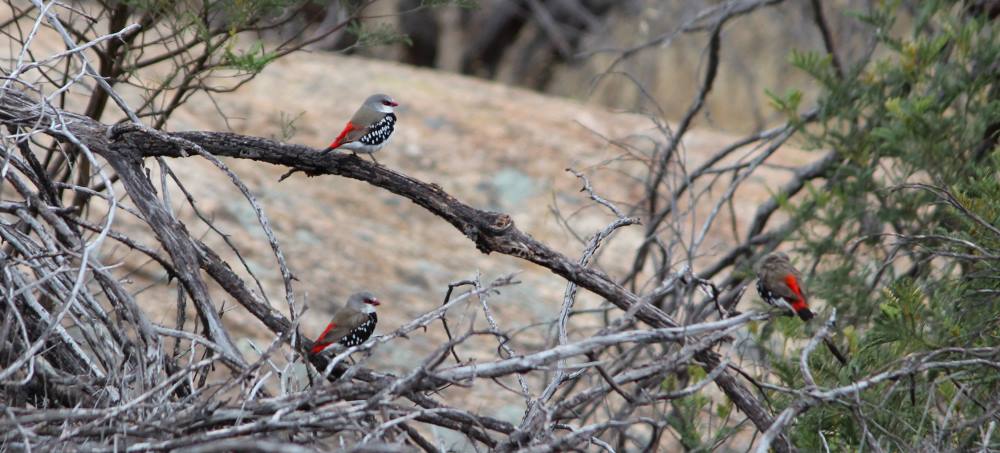
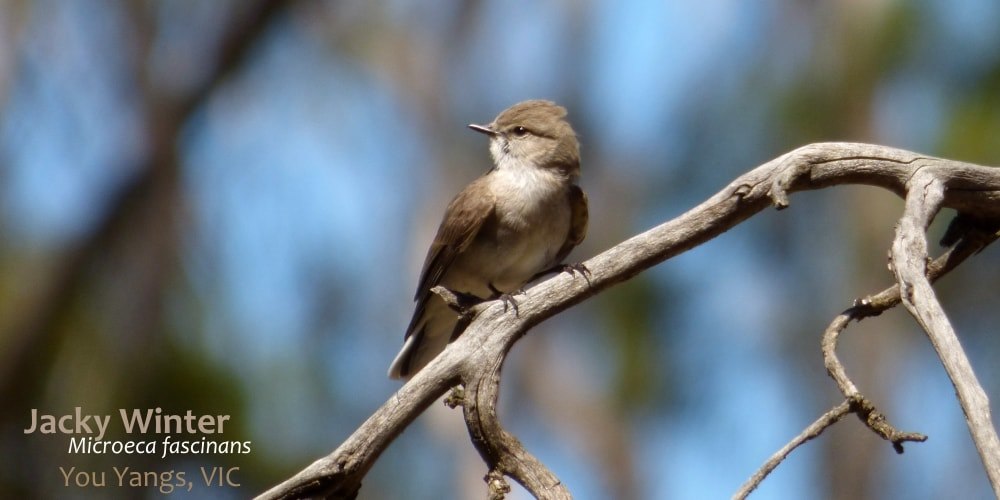
We plant a big diversity of native trees, shrubs and wildflowers, to create a flourishing ecosystem. We don’t plant only quick-growing trees for carbon capture, and we don’t plant masses of overused, widespread species, like Kangaroo Thorn/Hedge Wattle Acacia paradoxa as these can be harmful to Diamond Firetails. Our plantings typically include 30 to 40 species, carefully chosen to suit the site.
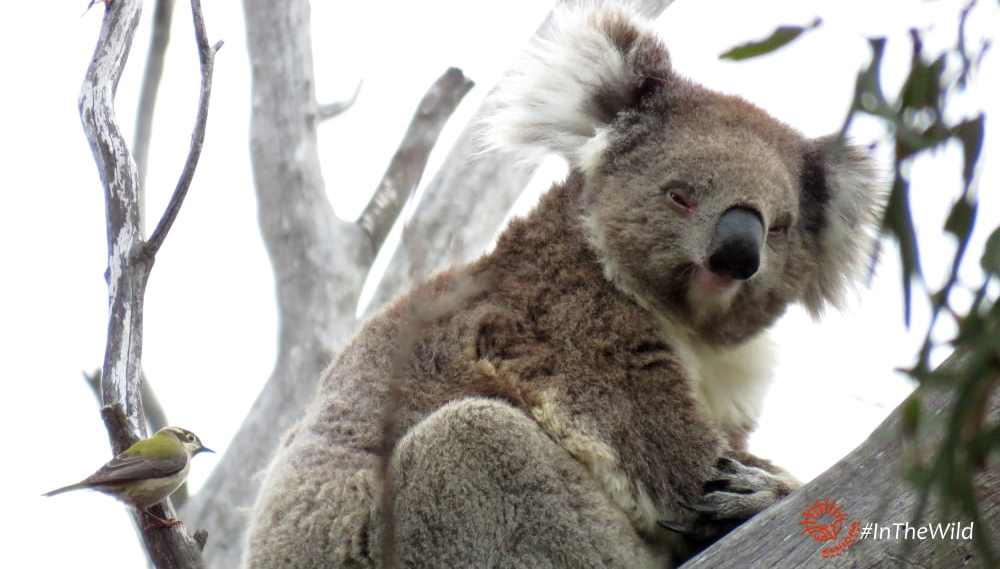
If we do a good job and plant a lot of native trees, critically endangered Swift Parrots may one day visit.
The endangered Tussock Skink Pseudemoia pagenstecheri (Volcanic Plains) is a resident of grassy woodlands in our area, and the endangered Glossy Grass Skink Pseudemoia rawlinsoni lives beside watercourses in our area. Both species will benefit from sensitive revegetation, and fencing off the riverbanks.
Vulnerable Golden Sun Moth Synemon plana lives on grasslands and grassy woodlands in our area. The caterpillars live underground near native grasses for up to 2 years, but the adults only live 1- 4 days so are rarely seen. Though we don’t plant grasses, our native plantings suppress weeds, and restrict livestock grazing, so provide a better environment for native grasses to thrive.
The Fiery Jewel Butterfly is endangered and lays its eggs near the bases of eucalyptus and wattle trees, which the caterpillars feed on. Small black ants build a nest next to the eggs, and once the caterpillars hatch, the ants shelter them in the nest during the day and shepherd the caterpillar to the new leaves each evening.
The critically endangered Spiny Rice-flower Pimelea spinescens subsp.spinescens has 90% of its entire world population on the Victorian Volcanic Plain. Endangered White Sunray Leucochrysum albicans subsp. tricolor is being carefully managed on grassland sites in our area. Endangered Button Wrinklewort Rutidosis leptorrhynchoides now only occurs in our region. We don’t currently plant these sensitive species, but hopefully our plantings may one day support them.
Even our beloved Melbourne Yellow Gum Eucalyptus leucoxylon connata is considered endangered. We plant many of these, and are very careful to only plant this subspecies from local provenance seed in the area it naturally occurs.
..
Fact 5: 25,000 new koala trees 700 community volunteers with a spring in their step and a smile on their faces.
Saving koalas is all about people. People have caused the decline of koalas, and only people can fix it.
Our human community knows this, and are determined to do something about it. In 2021 we provided opportunities for over 700 community volunteers to plant koala trees, remove weeds and monitor koalas in and around the You Yangs and in East Gippsland. That’s 700 smiles, 700 pairs of dirty hands, and 700 deep satisfied sleep-nights. In 2022 over 880 volunteers participated.
Now all we need is more of those smiles and dirty hands in 2023. Join an event with us.
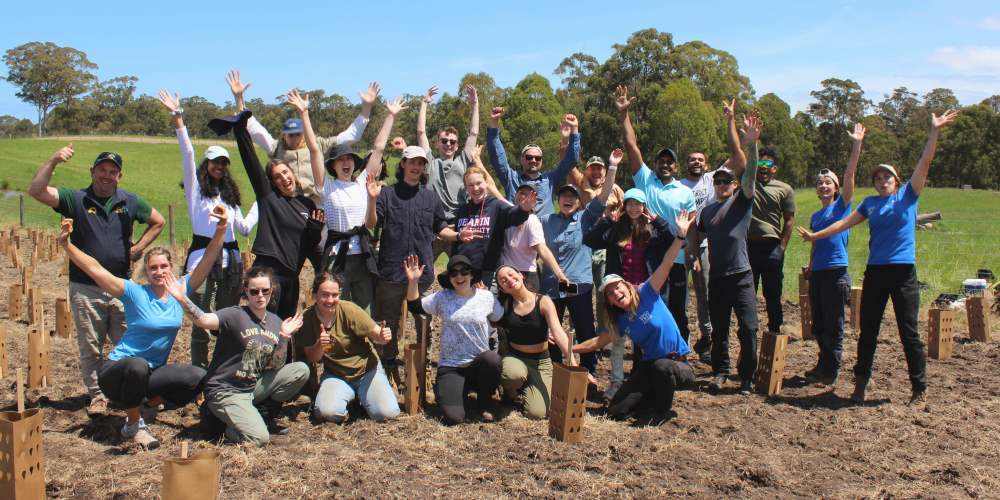
..
NOTES & REFERENCES:
(1) Really, we can’t extrapolate. FLINTpro went into some length to explain that the assessment is accurate for the Wurdi site only. Carbon storage is very location specific, and even sites a few kilometres away could be entirely different. So please take this as a very very rough guide.
(2) Australia as a nation is responsible for 533 million tonnes of carbon emissions every year (2019 figures). So to get a per capita calculation, that figure is divided by our population. The per person emissions that result = 21 tonnes of carbon emissions every year for each Australian. Some of us emit more, some less.
How many trees does a koala need: https://koalaclancy.wordpress.com/2019/11/26/how-many-trees-koalas-need/
How koala tree planting can help mitigate damage from carbon emissions: https://www.koalaclancyfoundation.org.au/koala-tree-planting-reducing-carbon-emissions/
Full FLINTpro assessment of carbon storage here: https://www.koalaclancyfoundation.org.au/wp-content/uploads/2021/10/FLINTproReport_KoalaClancy_PlantingWurdi_opt.pdf
Serrated Tussock Weed Management Guide:
http://serratedtussock.com/wp-content/uploads/files/CRC-Weed-Management-Guide-Serrated-Tussock.pdf
Diamond Firetail: https://www.swifft.net.au/cb_pages/sp_diamond_firetail.php
Speckled Warbler: https://www.birdlife.org.au/bird-profile/speckled-warbler
Jacky Winter: https://www.birdlife.org.au/bird-profile/jacky-winter
Brown Treecreeper: https://www.birdlife.org.au/bird-profile/brown-treecreeper
Swift Parrot: https://www.swifft.net.au/cb_pages/sp_swift_parrot.php
Glossy Grass Skink: https://grasslands.ecolinc.vic.edu.au/fieldguide/fauna/glossy-grass-skink#details
Golden Sun Moth: https://www.swifft.net.au/cb_pages/sp_golden_sun_moth.php and
https://grasslands.ecolinc.vic.edu.au/fieldguide/fauna/golden-sun-moth#details
Fiery Jewel Butterfly: http://lepidoptera.butterflyhouse.com.au/lyca/ignitus.html
Spiny Rice-flower: https://www.swifft.net.au/cb_pages/sp_spiny_rice-flower.php
White Sunray: https://www.swifft.net.au/cb_pages/sp_white_sunray.php
Button Wrinklewort: https://www.swifft.net.au/cb_pages/sp_button_wrinklewort.php






